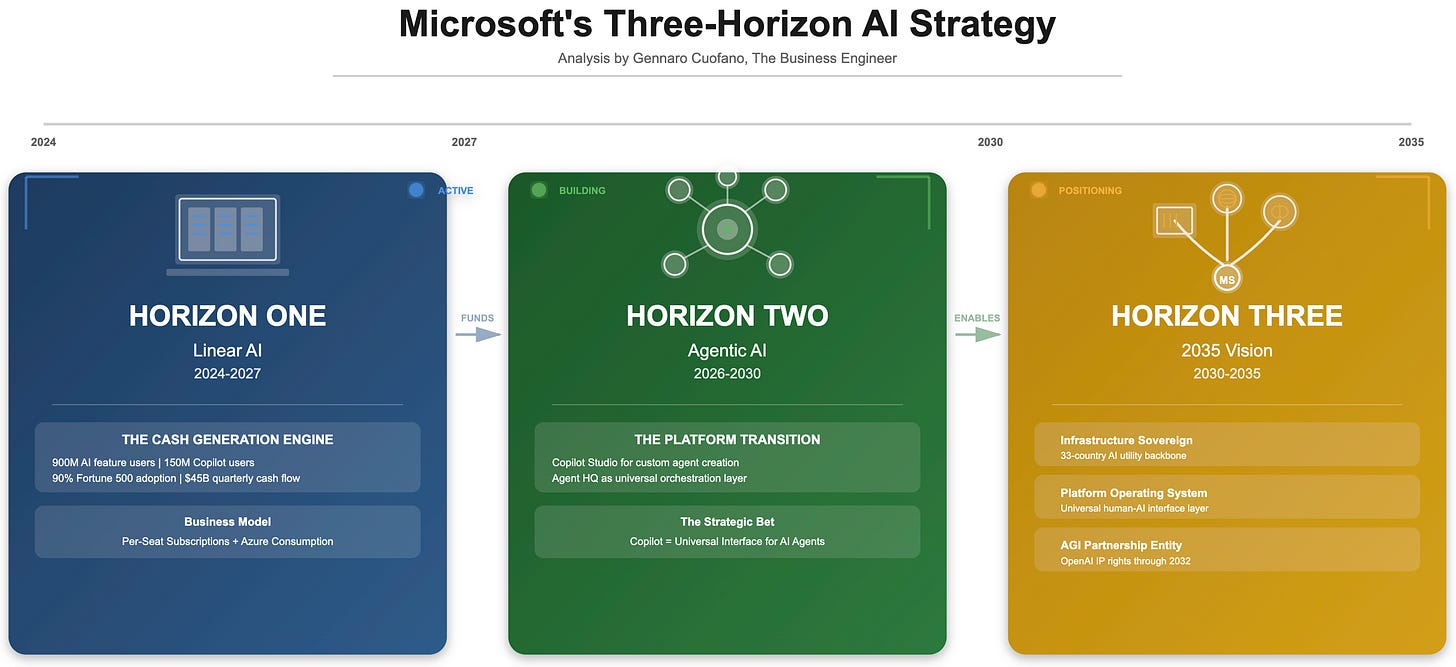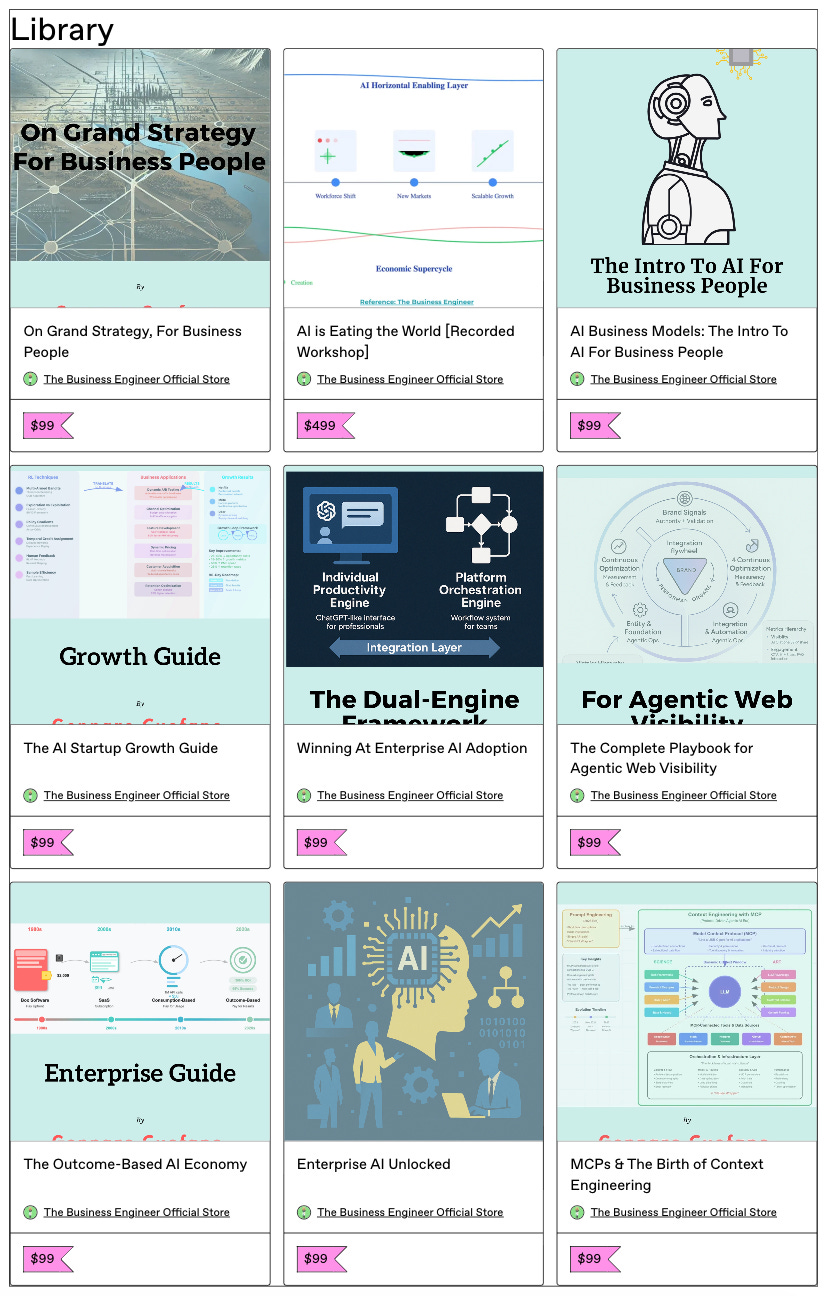Microsoft’s Three-Horizon AI Strategy
Microsoft’s FY26 Q1 results reveal a company executing a sophisticated three-horizon strategy that will define both its own transformation and the structure of the AI ecosystem over the next decade.
Horizon One represents the linear AI business Microsoft is monetizing today: Azure infrastructure services, Microsoft 365 Copilot integration, GitHub developer tools, and enterprise security.
This generates $45 billion in quarterly cash flow and funds the entire AI buildout. The business model is proven, the go-to-market leverages existing enterprise relationships, and the competitive advantages derive from decades of platform integration. Microsoft dominates here because it owns the enterprise productivity stack and the relationships that come with it.
Horizon Two is the agentic AI platform Microsoft is building for 2026-2028: Copilot Studio for custom agent creation, Agent HQ as the orchestration layer for coding agents, and the transformation of Copilot from assistant to autonomous system.
This represents a fundamental shift from AI-enhanced tools to AI-as-colleague, where businesses deploy specialized agents for specific workflows and processes.
The business model transitions from per-seat subscriptions to consumption-based agent deployment. Microsoft’s advantage here depends on making Copilot the universal interface for agent interaction while maintaining platform control.
Horizon Three envisions the Microsoft of 2035: an AI infrastructure sovereign operating critical national infrastructure across democratic alliances, a platform company whose APIs and interfaces define how humans and organizations interact with AI systems, and potentially an AGI-era entity whose relationship with OpenAI determines who controls the most transformative technology in human history.
The business model remains uncertain, but the strategic positioning—sovereign cloud infrastructure, extended OpenAI IP rights through 2032, and deep integration across the technology stack—creates optionality regardless of how AI capabilities evolve.
The October 2025 OpenAI agreement enables all three horizons simultaneously. The $250 billion Azure contract secures compute demand for Horizon One infrastructure.
The extended IP rights through 2032 provide model access for Horizon Two agent platforms. The 27% equity stake and strategic flexibility create positioning for Horizon Three’s uncertain future.
This is strategic architecture designed not for a single outcome but for multiple scenarios, maintaining optionality while delivering concrete advantages at each time frame.
The Three-Horizon Framework: Understanding Microsoft’s AI Transformation
To understand where Microsoft is headed, we must recognize that the company operates simultaneously across three distinct strategic horizons, each with different timeframes, business models, and competitive dynamics. This isn’t portfolio management—it’s deliberate architecture where success at each horizon funds and enables the next.




